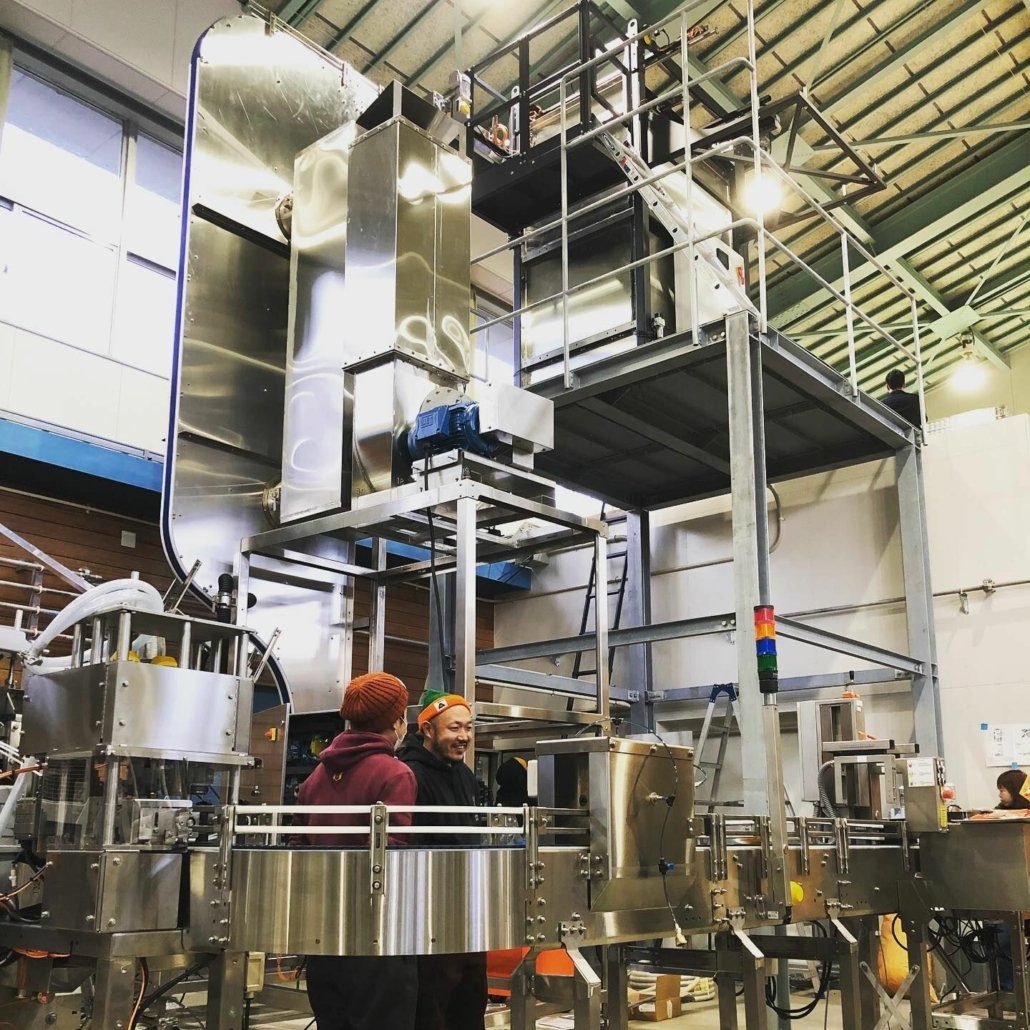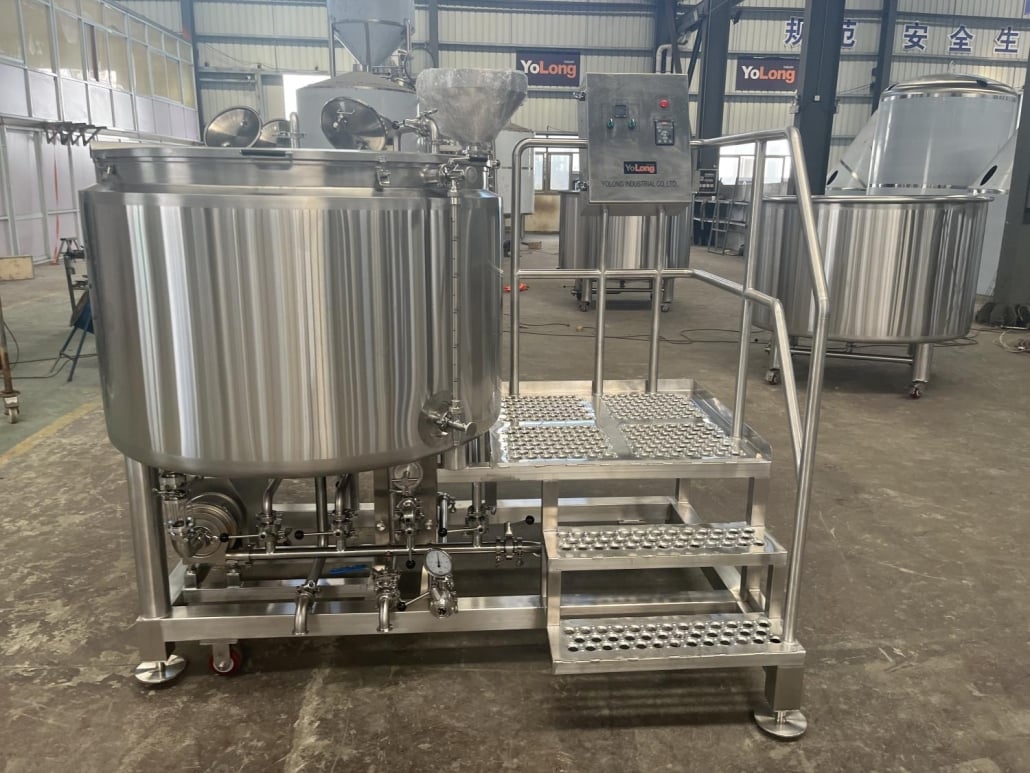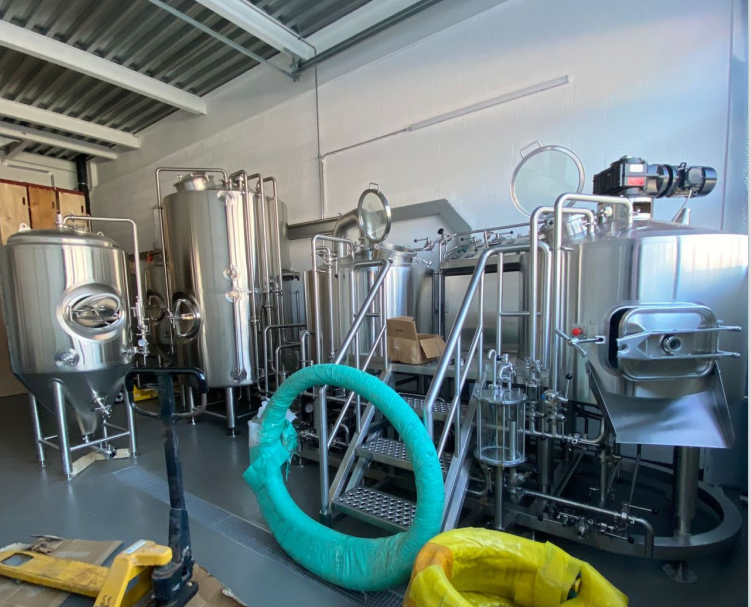Beer Home Brewing Equipment
Essential Beer Home Brewing Equipment
Getting started with home brewing requires a few core tools. Each piece of equipment serves a specific purpose and contributes to the overall brewing process. Understanding what each item does and why it’s important will help you start brewing with confidence.
Core Brewing Equipment Guide
| Equipment | Description | Usage Tips |
|---|---|---|
| Brew Kettle | The brew kettle is where you’ll boil your ingredients, typically the hops and malt extract. It’s crucial for dissolving sugars and sterilizing ingredients to prevent contamination. | Choose a kettle with at least 5-gallon capacity. Stainless steel is preferred for durability and ease of cleaning. |
| Fermenter | A fermenter is where the wort (pre-beer liquid) ferments and transforms into beer. Options include buckets, glass carboys, and stainless steel fermenters. | Ensure the fermenter has an airlock for proper gas release during fermentation. |
| Airlock | An airlock allows CO2 to escape during fermentation while keeping oxygen out. This is essential for maintaining the correct fermentation environment. | Clean thoroughly to prevent contamination. Attach securely to the fermenter. |
| Hydrometer | A hydrometer measures the specific gravity of your beer, which helps track fermentation progress and estimate alcohol content. | Take readings before and after fermentation. Make sure to sanitize the hydrometer before use. |
| Auto-Siphon | An auto-siphon assists in transferring beer from the fermenter to bottles without disturbing sediment at the bottom. | Use with food-grade tubing and clean after each use to prevent flavor contamination. |
| Bottling Bucket | A bottling bucket allows easy mixing of sugar with the beer before bottling to ensure carbonation. | Look for a bucket with a spigot for easier bottling. Ensure it’s airtight to prevent contamination. |
| Bottles & Caps | Bottling equipment is needed to store and carbonate the final product. Typically, glass bottles and caps are recommended, although plastic options exist. | Sanitize bottles thoroughly. Use a capping tool for a tight seal to maintain carbonation. |
Brewing Tips for Essential Equipment
Starting with quality equipment helps set the stage for a better brewing experience. A brew kettle with adequate capacity ensures that your ingredients can mix thoroughly without risk of boiling over. Stainless steel is usually preferred for its durability and ease of cleaning, making it easier to maintain a contamination-free brewing environment.
Moving onto fermentation, using a well-sealed fermenter with an airlock will help manage CO2 release and prevent oxygen from spoiling the beer. Ensuring that the fermenter is at the right temperature and sanitized thoroughly will also contribute to a smoother fermentation process.

Advanced Equipment for Enthusiast Brewers
As you progress in home brewing, investing in advanced equipment can significantly enhance your brewing capabilities, improve flavor consistency, and enable experimentation. Advanced equipment is ideal for those who have mastered the basics and are ready to dive deeper into custom brewing, precise temperature control, and larger batch brewing.
Advanced Brewing Equipment Guide
| Equipment | Description | Usage Tips |
|---|---|---|
| Electric Brew Kettle | Allows precise control of the brewing temperature and avoids the need for a gas burner, making it a convenient indoor option. | Look for kettles with digital controls. Perfect for those who want to brew year-round regardless of outdoor weather conditions. |
| Fermentation Chamber | A controlled environment for fermentation, enabling specific temperature settings crucial for particular beer styles (e.g., lagers). | Place in a temperature-stable area to reduce strain on the chamber. A programmable thermostat can make temperature adjustments easier. |
| Grain Mill | Lets brewers crush grains themselves, ensuring fresher ingredients and better control over the grind size, which impacts flavor extraction. | Adjust the grind size based on the recipe. Finer grinds increase extraction but may create filtration challenges during mashing. |
| Wort Chiller | Rapidly cools the wort after the boil, reducing the risk of contamination and haze in the beer. Common options include immersion and plate chillers. | Connect to cold water source for efficient cooling. Clean and sanitize thoroughly to prevent flavor and bacterial contamination. |
| Conical Fermenter | Features a cone shape to collect sediment at the bottom, allowing clearer beer and easier sediment removal. | Higher-end fermenters often have valves for easy extraction. Stainless steel options are more durable and easy to clean. |
| Kegging System | Allows brewers to keg beer instead of bottling, offering convenience and better carbonation control. | Invest in a CO2 regulator for consistent pressure. Suitable for brewers who want to avoid bottling and simplify the carbonation process. |
Advantages of Advanced Equipment
Investing in advanced brewing equipment gives you more control over every aspect of brewing, enabling better consistency and the ability to experiment with more complex recipes. For example, a fermentation chamber is invaluable for lagering or brewing any style that requires specific temperature ranges. Similarly, a conical fermenter simplifies the process of removing sediment, resulting in a cleaner beer with less time and effort.
Types of Brewing Systems and Their Capacities
Brewing systems come in various types, designed to meet different experience levels, brewing goals, and batch sizes. From compact all-in-one systems suitable for small spaces to larger multi-vessel setups for serious home brewers, each type offers unique benefits.
| System Type | Capacity (Gallons) | Ideal for Space | Design & Layout | Customization |
|---|---|---|---|---|
| All-in-One System | 1-10 | Small | Compact, typically a single vessel | Minimal customization |
| Single Vessel System | 5-20 | Moderate | Freestanding, all components in one | Limited customization options |
| Two-Vessel System | 10-30 | Larger | Separate mash tun and kettle | Some customization possible |
| Multi-Vessel System | 30+ | Large, dedicated | Multiple tanks, typically custom setups | High customization for processes |
Each brewing system type has its own benefits. For example, an all-in-one system is great for beginners or those with limited space, combining brewing, boiling, and cooling functions in one compact setup. Multi-vessel systems, on the other hand, are designed for dedicated spaces and provide enhanced flexibility for creating custom beer styles and larger batches.
Suppliers and Price Ranges for Brewing Equipment
Choosing a reputable supplier for brewing equipment is crucial for ensuring quality and support. The following table provides an overview of some popular suppliers, along with typical price ranges and customization options.
| Supplier | Price Range | Customization Options | Shipping & Support |
|---|---|---|---|
| Northern Brewer | $50 – $2,500 | Basic to advanced setups, small add-ons | Offers international shipping and support for custom orders |
| MoreBeer | $30 – $3,000 | Wide range of customization options | Free U.S. shipping on select orders; good customer support |
| BrewDemon | $60 – $1,500 | Limited customizations | Fast shipping within the U.S.; limited international options |
| Williams Brewing | $100 – $4,000 | High-end and professional setups | Comprehensive support, offers financing options on large orders |
Installation, Operation, and Maintenance of Brewing Equipment
Proper installation, operation, and maintenance of brewing equipment can extend its life and ensure optimal performance. The following table provides practical advice on setup, cleaning, and routine maintenance.
| Installation Requirements | Operation Tips | Maintenance & Cleaning |
|---|---|---|
| Follow manufacturer guidelines for safe setup | Use equipment according to temperature and capacity limits | Clean all equipment after each use to prevent buildup and contamination |
| Use food-grade tubing and connections | Monitor brewing times and temperatures carefully | Inspect seals, valves, and tubing regularly for leaks or wear |
| Ensure proper ventilation if brewing indoors | Avoid overfilling fermenters or kettles to prevent spillage | Use a sanitizing solution for fermenters, kettles, and bottles |
Maintaining your brewing equipment is essential to ensure it lasts and remains free of contamination. A quick rinse after use might be tempting, but thorough cleaning—particularly of fermenters and tubing—prevents bacteria from affecting future brews. Some advanced equipment, like conical fermenters, have removable parts that require additional cleaning steps.
Choosing the Right Supplier
Finding the right supplier can influence the quality of your brewing experience. Factors like price, reliability, customization options, and shipping policies play a significant role. Below are factors to consider:
| Factor | Importance |
|---|---|
| Reliability | Select a supplier known for quality products and dependable customer service. |
| Customer Reviews | Check reviews from other brewers to gauge satisfaction with the equipment. |
| Customization Options | If you have specific needs, consider suppliers offering customization. |
| Shipping & Delivery | Look for suppliers with flexible shipping options, especially if you need international shipping. |
| Price vs. Quality | Balance cost with quality, as low-priced equipment might compromise durability and performance. |
Researching potential suppliers helps ensure you get high-quality, reliable equipment that meets your brewing needs.
Comparing Equipment Types: Pros and Cons
Selecting equipment that matches your brewing ambitions requires understanding each type’s advantages and limitations.
| Equipment Type | Pros | Cons |
|---|---|---|
| All-in-One System | Compact, easy to use, great for beginners | Limited customization, smaller batch sizes |
| Electric Brew Kettle | Precise temperature control, suitable for indoor brewing | Requires an electrical source, may be more costly |
| Grain Mill | Fresh grind, full control over grain texture | Additional equipment to maintain, requires cleaning |
| Fermentation Chamber | Precise fermentation control, perfect for lagers and other temperature-sensitive styles | Can be costly and take up space |
| Conical Fermenter | Reduces sediment in beer, easier to remove yeast | More expensive than standard fermenters |
| Kegging System | Eliminates bottling, more control over carbonation levels | Higher upfront cost, requires CO2 equipment and maintenance |
Each type of equipment has unique benefits and drawbacks. For example, all-in-one systems are user-friendly and compact, making them ideal for beginners, while kegging systems save time on bottling but come with additional costs.
Step-by-Step Brewing Process Explained
The brewing process consists of several key steps, each requiring specific equipment and attention to detail:
- Mashing: Combine milled grains and hot water in the mash tun, allowing enzymes to break down the starches into fermentable sugars.
- Boiling: Transfer the wort to the kettle and add hops; this stage sterilizes the wort and extracts bitterness from the hops.
- Cooling: Use a wort chiller to rapidly cool the wort to a temperature suitable for fermentation.
- Fermentation: Transfer the cooled wort into a fermenter, add yeast, and allow it to ferment over several days or weeks.
- Bottling or Kegging: Once fermentation is complete, transfer the beer into bottles or a keg. If bottling, add sugar for carbonation.
Understanding each step helps you produce better-quality beer by controlling each stage of the brewing process.

FAQ
| Question | Answer |
| What is the best equipment for beginners? | Beginners should start with an all-in-one brewing system or a basic kit, which includes essential items like a kettle, fermenter, and bottles. |
| How often should equipment be cleaned? | Clean all equipment thoroughly after each use. Regular sanitization of fermenters and bottles is essential to prevent contamination. |
| Is kegging better than bottling? | Kegging is faster and provides better carbonation control, but it has a higher upfront cost. Bottling is more affordable and offers flexibility with small batches. |
| What size kettle do I need? | A 5-gallon kettle is suitable for most beginners, though advanced brewers may opt for 10-gallon kettles for larger batches or more headspace during the boil. |
| How can I control fermentation temperature? | A fermentation chamber or temperature controller allows precise temperature management, which is especially important for certain beer styles. |
Share this entry
Interested in learning more about Brewing Systems including additional details and pricing information? Please use the form below to contact us!
YOLONG BREWERY EQUIPMENT FAQS
- Commercial Brewery / Craft Brewery / Microbrewery / Nanobrewery
- What is The Difference Between Craft Beer and Industrial Beer?
- The Bespoke Differences In Custom Brewing Systems
- Everything You Need to Know About Kettle Souring
- How to Choose Brewing Equipment for Your business?
- How To Choose The-Best Partner To Build Your Commercial Microbrewing System?
- Two Detection Sensors That You Need To Use In Your Brewhouse System
- Remote Control Applications in Brewing Equipment/How does it work?
- How To Clean Your Brand New Brewery Tanks?

